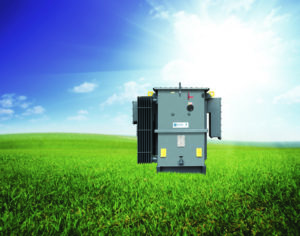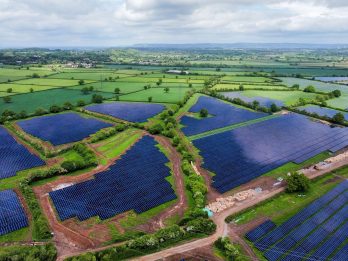Reducing the carbon footprint by recognising where energy is wasted
Whilst there are plenty of general hints and tips on how to reduce your carbon footprint on an individual basis, like choosing cycling over driving, becoming vegan or paying more attention to the appliances around your home, at Wilson Power, we’re more focused on saving energy from large-scale operations such as hospitals and universities.
UK energy production & consumption

The generation of energy is the single largest contributor to UK emissions. Currently, the likes of power stations and offshore oil and gas are topping the CO2 list. However, these are beginning to be combated through the use of fossil fuels, renewables and other alternative energy sources. Yet even the most efficient economies will still need to contend with the ongoing increase in the demand for energy.
As the population of our planet rises, along with the standard of living, so does the demand for energy. What’s more is that this energy is often been wasted; from the extraction at the resource to the manufacturing of the goods, to the transportation of them and final disposal, we are wasting energy at each stage. It’s vital to address this for a more sustainable future.
Combatting CO2 in the UK
Through the Climate Change Act, the UK government has committed to the reduction of emissions by at least 80% of 1990 levels by 2050, as well as contributing to overall global emission reductions, in an effort to limit global temperature rises to as little as possible above 2°C.
The Committee on Climate Change (CCC) are tasked with monitoring how the UK are progressing and whether or not the UK are on course to meet annual targets. Since its introduction in 2008, the UK has shown continuous success and are on track for their 2050 target.
This success is no doubt down to the ongoing awareness and education surrounding climate change, sustainability and renewable ventures, but we must also recognise the innovative technologies and attitudes of individuals who are striving for change.
UK Energy Wastage
Despite the UK’s initial successes in reaching their targets, there are areas where significant energy wastage is occurring on a daily basis, as highlighted earlier in the UK energy production and consumption section.
Be it through heat (thermal), light (radiant), motion (kinetic), electrical, chemical or gravitational energy can go to waste, unknowingly. Capturing this energy and making use of it welcomes a more efficient operation, no matter what your organisation. By paying more attention to energy waste, you can help save your business money, and reduce your carbon footprint whilst doing so.
Obviously, your emissions can be lowered by switching to low-carbon fuels (something that will be expected to meet UK carbon targets). By doing this, not only can we increase the amount of electricity through technologies like wind and solar power, but we will become less dependent on fossil fuels like gas and coal. The same can be said for generating heat; using a variety of low-carbon technologies like heat pumps which capture heat from the ground or air, to save energy going to waste. However, there may still be elements of energy waste, no matter what technology you employ, through heat losses, for example.
Reducing your carbon footprint with Wilson Power Solutions
Where Wilson Power Solutions intercept energy wastage is at the source of the power supply.

Even if you are confident that your solar farm is supplying ‘clean energy’ to your operation, there are still opportunities to capitalise on energy waste to become even more efficient.
We are particularly active within industries and sectors which have a similar environmental ethos and are in critical need of saving every penny, like the education sector, for instance. This is where we see our power supply solutions impacting on a level we can be hugely proud of.
Our Wilson E2 Super Low Loss Amorphous Transformer, is perhaps our most exciting development. Not only because it already meets and exceeds the EU Eco Design requirements for 2021 (tier 2), but because we’ve already installed over 750 of them across the UK with great results.
Based on an average 25-year transformer lifespan, a 1000kVA Wilson E2 transformer can achieve up to £100,000 worth of energy costs savings through loss savings. Moreover, it is manufactured to provide a lower nominal voltage of 415V (11kV/415) and designed to deliver a lower output voltage than standard rated 11kV/433 units. The savings which can be achieved does depend on your load, but our customers typically achieve a 3-8% reduction of their electricity consumption, decreasing their CO2 emissions in the process.
 9 Oct 2018
9 Oct 2018IETF: Industrial Energy Transformation Fund – Phase 3
Industrial emissions account for around 18% of UK emissions. To reach the Net Zero target in 2050, industrial emissions need to fall by around 90% from today’s levels. Industrial Energy Transformation Fund (IETF) launched Phase 3 of industrial grants on Monday 29 January 2024, with the closing date on Friday 19 April 2024, and aims […]
 23 Feb 2024
23 Feb 2024Guide to Replacing Transformers
The third part of the Intergovernmental Panel on Climate Change (IPCC) Sixth Assessment Report (AR6) was published earlier this month. Scientists warn that limiting global warming to 1.5°C is beyond reach but restricting temperature rise to no more than 1.5C to 2C could be the range that will minimize the likelihood of reaching critical environmental […]
 22 Apr 2022
22 Apr 2022IETF: Industrial Energy Transformation Fund FAQ
The Industrial Energy Transformation Fund (IETF) was designed by the UK government to encourage energy-intensive businesses to cut their carbon emissions and reduce their energy waste by switching to energy-efficient low-carbon technologies. A budget of £315 million was allocated by the government to be spent through the IETF. BEIS manages England, Wales and North Ireland’s […]
 4 Apr 2022
4 Apr 2022










